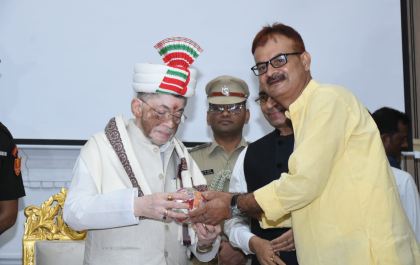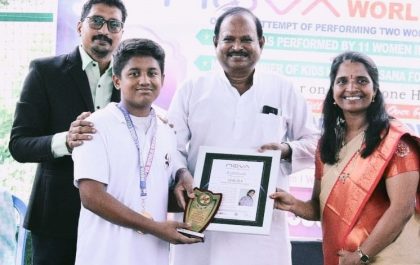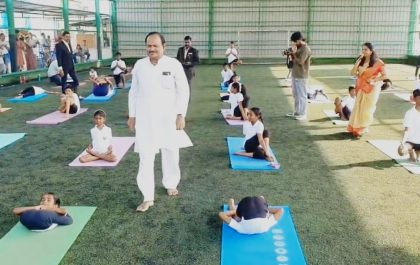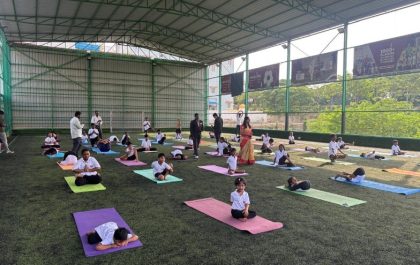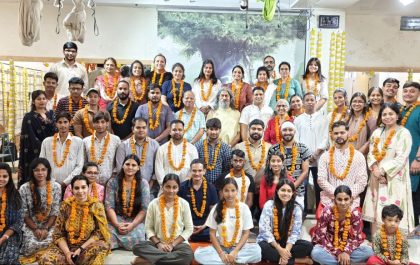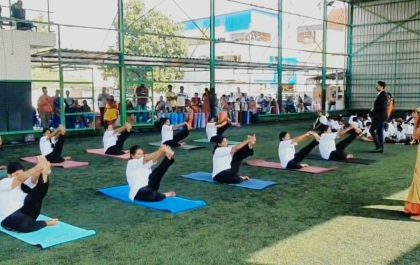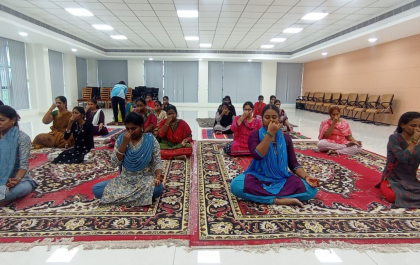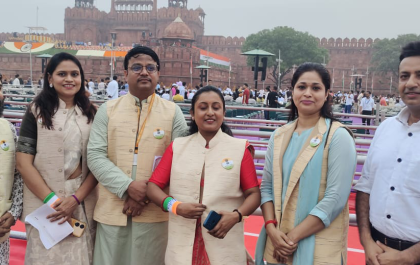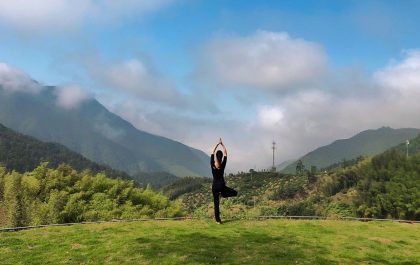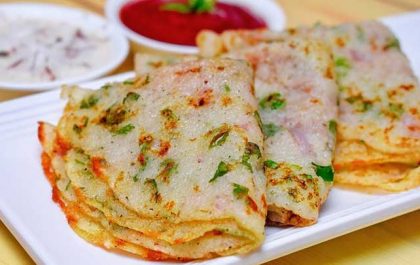Research is extremely important to support different approaches to health care. In the recent past, Yoga has been gaining lot of attention as Yoga Institutes, reseachers, scholars have started offering substantive clinical research evidence. In this issue, Indian Yoga Association brings to you the Research Papers published by our Member Institutes and other Institutes or individuals on the various techniques of Pranayama and their benefits.
Patanjali Research Foundation

Body temperature in practitioners of a yoga breathing technique considered to be heat generating
Author: Shirley Telles, Kumar Gandharva, Ram Kumar Gupta, Sachin Kumar Sharma, Acharya Balkrishna
Published in: International Journal of Yoga, Volume 13, Issue 2
Published on: April 30, 2020
Context: Suryabheda pranayama is traditionally described as “increasing the inner fire” and is believed to be heat generating. Aims: The present study aimed at determining whether the surface body temperature would increase after Suryabheda pranayama practice compared with sitting quietly for the same duration as a control. Materials and Methods: Nineteen participants with experience of Suryabheda pranayama practice (group mean experience ± standard deviation, 30.2 ± 22.8 months) were assessed in 3 sessions on separate days. The sessions were (i) Suryabheda pranayama with physiological locks or breath retention, (ii) Suryabheda pranayama without physiological locks or breath retention, and (iii) quiet sitting (control session). The axillary surface body temperature was monitored in all three sessions before (5 min), during (15 min), and after (5 min) the intervention. Ambient temperature and humidity in the recording cabin used for testing were noted. From the ambient temperature and humidity, the heat index was derived Statistical Analysis: Repeated measures analyses of variance were performed to compare values before, during, and after the 3 sessions, using SPSS version 24.0. Results: The surface body temperature increased during and after Suryabheda pranayama with physiological locks (P < 0.001;P < 0.001), Suryabheda pranayama without physiological locks (P < 0.01;P < 0.001), and quiet sitting (P < 0.001;P < 0.001) compared to the respective before values. Conclusion: The control (i.e., quiet sitting) and experimental sessions (i.e., suryabheda with locks and suryabheda without locks) showed a comparable increase in the surface body temperature. Hence, the increase in surface body temperature during and after experimental sessions does not appear to be related to the pranayama techniques. The possible factors which may have contributed to increased surface body temperature in the control and experimental sessions have been discussed.
Centre for Yoga Therapy Education and Research (CYTER)

The Efficacy of Yogic Breathing Exercise Bhramari Pranayama in Relieving Symptoms of Chronic
Rhinosinusitis
Author: K Abishek, Satvinder Singh Bakshi, Ananda Balayogi Bhavanani
Published In: International Journal of Yoga 12(2): 120–123
Published On: May-August 2019
Abstract: A multitude of modalities are available for the treatment of chronic rhinosinusitis, however, each has its side effects and compliance issues. Bhramari pranayama, which is a breathing exercise in the practice of yoga, offers an inexpensive and free from side effect modality in this regard. Objective: The objective of this study was to evaluate the efficacy of Bhramari pranayama in relieving the symptoms of chronic sinusitis. Methodology: A total of 60 patients with chronic sinusitis were randomly divided into two groups, one received conventional treatment of chronic sinusitis and the other group was in addition taught to practice yogic breathing exercise Bhramari pranayama. The patients were advised to practice this breathing exercise twice a day and were followed up at 1, 4, and 12 weeks using the Sino Nasal Outcome Test (SNOT 22 score). Results: The mean SNOT 22 score in the group following the Bhramari pranayama breathing exercise using the ANOVA test improved from 39.13 ± 9.10 to 24.79 ± 8.31 (P = 0.0002), this improvement was seen by the end of 4 weeks itself and continued until the 12th week of assessment. Conclusion: Integrating regular practice of Bhramari pranayama along with the conventional management of chronic rhinosinusitis is more effective than conventional management alone.
Kaivalyadhama Yoga Institute & Research Center

Influence of pranayama on breath holding capacity and reaction time of junior state level elite swimmers
Author: Tusharkanti Bera, Kanchan Chourasia, Sanjay Uddhav Shete, Anita Verma
Published In: Yoga Mimamsa 49(2):63,
Published On: January 2017
Abstract: Sport like swimming requires maximum accuracy in style, fitness, skill and training. Moreover, the swimmers must possess a better reaction time as well as breath holding capacity that saves time for exhibiting best performance. Objective: It is thought that regular practice of kumbhaka phase of pranayama may improve swimmers’ breath holding capacity and reaction time. Since literature is silent about this concept, the present investigation was carried out. Method: Thirty male state level swimmers (n = 30), age: 16-18 years, volunteered in this study. This experiment considered a single group design, where all the selected subjects were assessed for two variables viz., reaction time and breath holding capacity at the baseline (i.e., 1st test or pre-test). Further, after a 6-week of swimming practice (1½ hours daily in the afternoon), the variables were re-tested (i.e., 2nd test or mid-test). After the 2nd test was over, all the subjects underwent 6 weeks of combined practice (i.e., swimming followed by pranayama) for 1½ hours daily in the morning. Finally, the subjects were assessed for the selected variables (i.e., 3rd test or posttest). Statistical Analysis: Repeated measures ANOVA followed by Newman-Kuels post hoc test was employed to record influence of pranayama practices on the variables. Results: The results revealed that swimming plus pranayama training leads to significant increase in breath holding capacity whereas reduction in reaction time. Conclusion: Pranayama practice leads to significant improvement in breath holding capacity and reaction time of swimmers.
Swami Vivekananda Yoga Anusandhana Samsthana (S-VYASA)

Effect of two selected yogic breathing techniques on Heart rate variability
Author: Raghuraj Puthige, A.G. Ramakrishnan, HR Nagendra, Shirley Telles
Published In: Indian Journal of Physiology and Pharmacology 42(4):467-72
Published On: November 1998
Abstract: The heart rate variability (HRV) is an indicator of the cardiac autonomic control. Two spectral components are usually recorded, viz. high frequency (0.15-0.50 Hz), which is due to vagal efferent activity and a low frequency component (0.05-0.15 Hz), due to sympathetic activity. The present study was conducted to study the HRV in two yoga practices which have been previously reported to have opposite effects, viz, sympathetic stimulation (kapalabhati, breathing at high frequency, i.e., 2.0 Hz) and reduced sympathetic activity (nadisuddhi, alternate nostril breathing). Twelve male volunteers (age range, 21 to 33 years) were assessed before and after each practice on separate days. The electrocardiogram (lead I) was digitized on-line and off-line analysis was done. The results showed a significant increase in low frequency (LF) power and LF/HF ratio while high frequency (HF) power was significantly lower following kapalabhati. There were no significant changes following nadisuddhi. The results suggest that kapalabhati modifies the autonomic status by increasing sympathetic activity with reduced vagal activity. The study also suggests that HRV is a more useful psychophysiological measure than heart rate alone.
Sample records of heart rate variability spectrum made before (upper record) and after (lower record) kapalabhati in a single subject (VN/31/ M). The vertical axis gives the power values in BPMI2/ Hz. The two vertical dotted lines separate the three frequency components, viz very low frequency (VLF), low frequency (LF) and high frequency (HF). The arrows indicate the highest peak in each range. The present record shows an increase in low frequency power and a decrease in high frequency power following kapalabhati, even though the actual scales (on the vertical axis) are different for the two records.
Sample records of heart rate variability spectrum made before (upper record) and after (lower record) kapalabhati in a single subject (VN/31/ M). The vertical axis gives the power values in BPMI2/ Hz. The two vertical dotted lines separate the three frequency components, viz very low frequency (VLF), low frequency (LF) and high frequency (HF). The arrows indicate the highest peak in each range. The present record shows an increase in low frequency power and a decrease in high frequency power following kapalabhati, even though the actual scales (on the vertical axis) are different for the two records.
